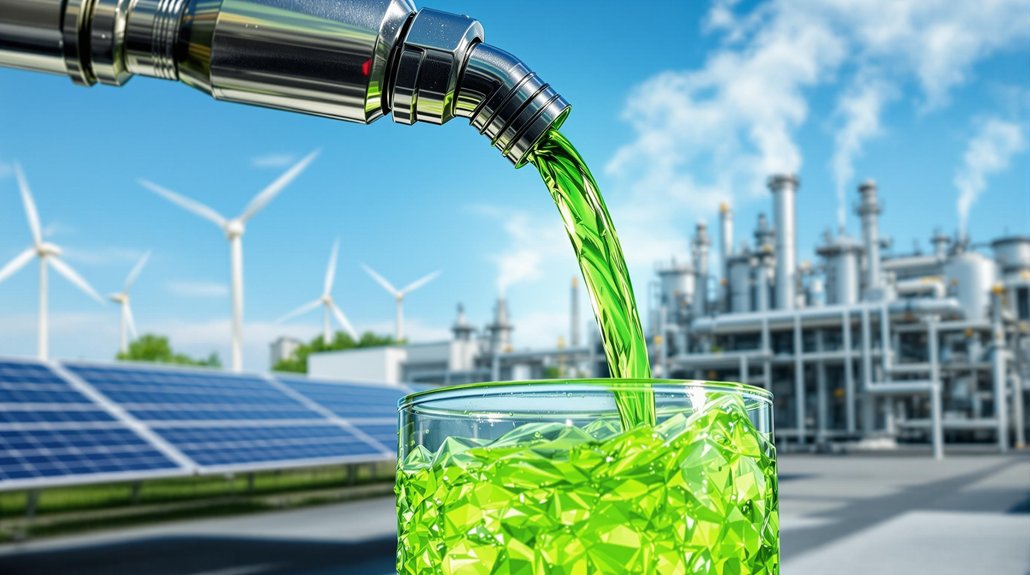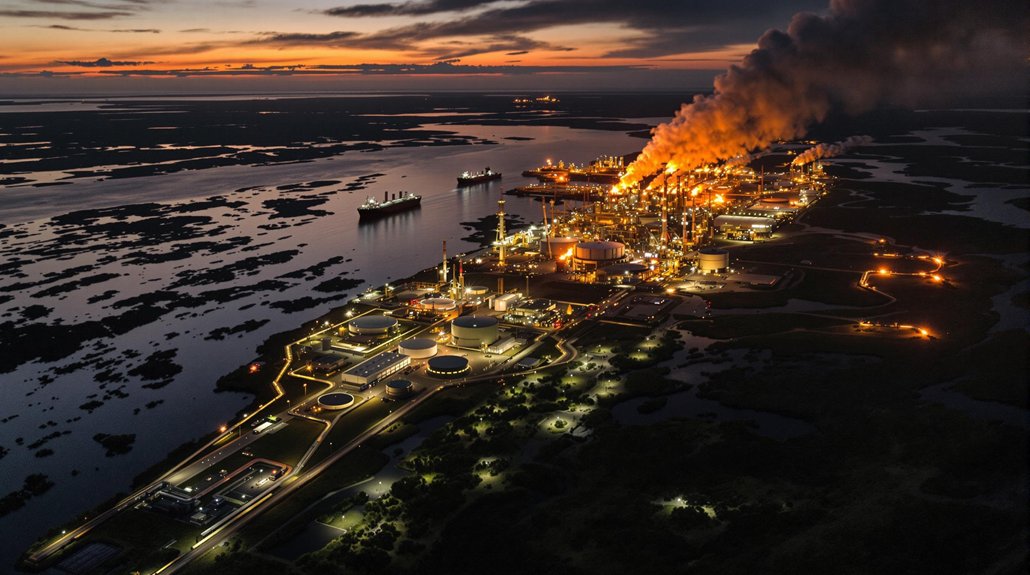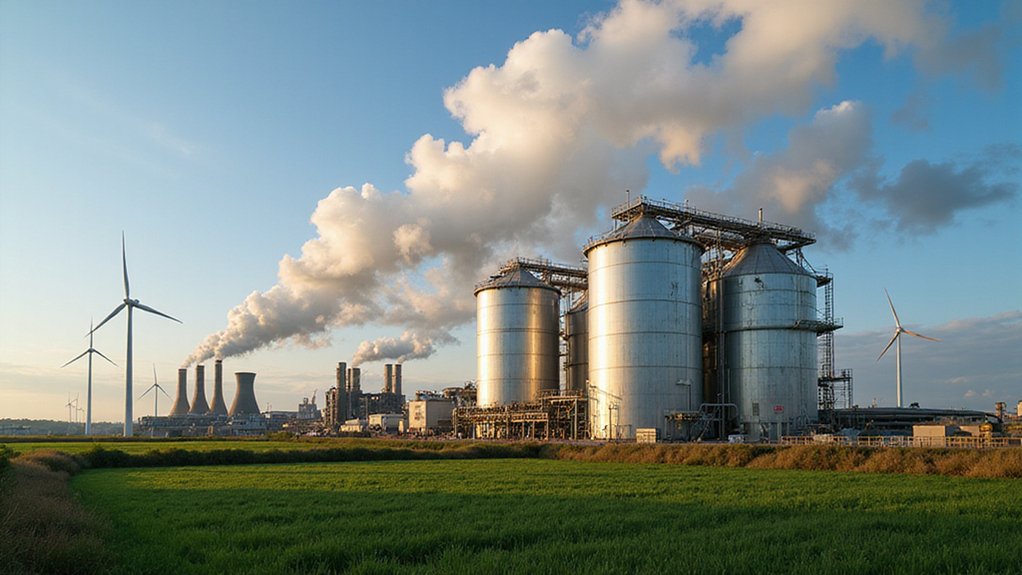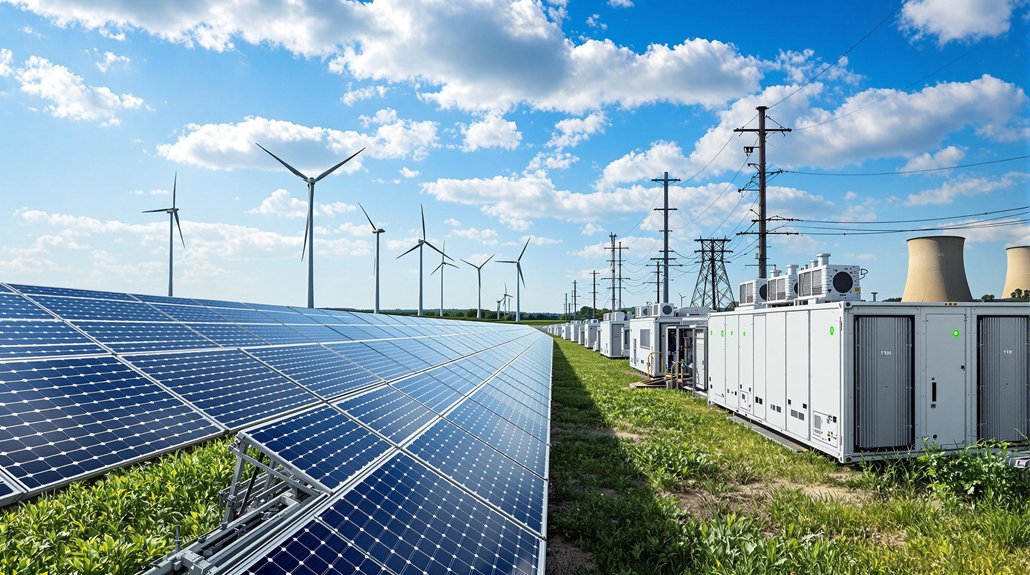Green methanol is emerging as a game-changer in the energy sector. This renewable fuel can reduce greenhouse gas emissions by up to 95% compared to traditional fuels. Major shipping companies like Maersk have already ordered methanol-powered vessels. It’s compatible with existing infrastructure and can be produced from sustainable sources including agricultural waste and carbon capture. The fuel industry giants haven’t widely promoted this alternative, despite its growing market potential and environmental benefits. What’s behind their reluctance?
As the world seeks cleaner energy solutions, green methanol is emerging as a game-changing fuel in the global push for sustainability. This innovative fuel is produced using renewable energy sources, combining green hydrogen with captured carbon dioxide. Unlike traditional methanol made from natural gas, green methanol greatly reduces greenhouse gas emissions while offering the same versatility.
The environmental benefits are impressive. Green methanol cuts carbon dioxide emissions by up to 95% compared to conventional fuels. It also reduces nitrogen oxide emissions by up to 80% and almost completely eliminates sulphur oxide and particulate matter. These reductions help fight air pollution and acid rain in communities worldwide.
One of green methanol’s biggest advantages is its compatibility with existing systems. It’s a liquid at room temperature, making it easy to store and transport. Industries can blend it with fossil fuels, allowing for a gradual shift without major infrastructure changes. This practical approach helps businesses meet sustainability goals without operational disruptions.
Green methanol offers a smooth transition to sustainability by working seamlessly with current infrastructure and storage systems.
The shipping industry has taken notice. With maritime transport responsible for about 3% of global greenhouse gas emissions, several major shipping companies are now ordering methanol-powered vessels. Companies like Maersk are actively investing in green hydrogen production for their e-methanol needs. The existing methanol propulsion technology makes this change relatively straightforward.
Production methods are becoming more efficient. Green methanol can be synthesized from renewable hydrogen via water electrolysis and CO₂ captured from industrial emissions. Alternative feedstocks include biomass and municipal waste, creating additional environmental benefits. Unlike intermittent renewables, green methanol production can utilize geothermal energy’s reliability to ensure consistent manufacturing output.
The market for green methanol is growing rapidly. Investments are increasing as emissions regulations tighten worldwide. Its compatibility with existing logistics systems makes it commercially viable, and ongoing innovation is steadily reducing production costs.
As a versatile chemical feedstock and transportation fuel, green methanol supports a circular economy while helping nations meet carbon neutrality targets. With global production reaching approximately 110 million tons annually, green methanol represents a promising solution for industries looking to decarbonize in the coming decades.








